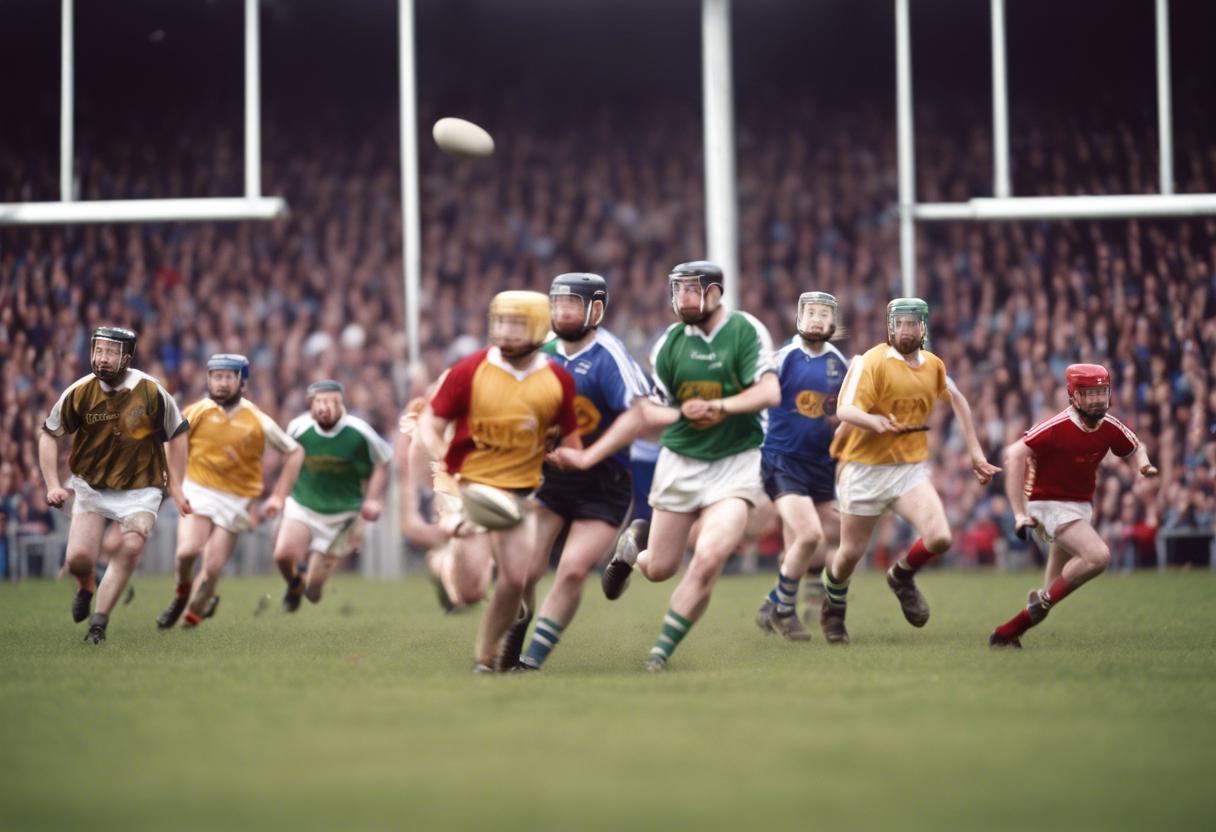The GAA has once again emerged victorious in the allocation of the Government’s €230 million Community Sport Facilities Fund, with almost €97 million granted to GAA county boards and clubs nationally. A total of 787 Gaelic games projects were approved, totalling €96,901,302, dwarfing the second-most significant allocation of €44,562,200 to multi-sport initiatives (362 grants).
Football ranked third receiving 371 grants amounting to €41,400,230, while golf and rugby were awarded €11,423,015 (107 grants) and €9,969,837 (76 grants) respectively. Comparatively, in the 2020 funding round, Gaelic games secured €65.5 million, multi-sport €28.9 million, football €25.1 million, golf €8.8 million, and rugby €8.7 million.
The mismatch in financial support between different sports over time has fuelled debate related to the grassroots funding scheme, previously the Sports Capital and Equipment Programme. Last year, Sport State Secretary, Thomas Byrne, suggested the discrepancy was mostly due to clubs in particular sports not submitting applications.
He detailed that in the three latest rounds, the GAA requested close to €200 million in contrast to football’s €73 million. The recent push for football clubs to apply for funding might have contributed to their larger allotment this round, increasing from €25 million to slightly above €40 million. Notably, €454,228 of this will be employed by Dundalk FC to furnish a new pitch and upgrade floodlights.
The grants were distributed among over 40 individual sports and multi-sport and recreational facilities. Gaelic games leads the pack, with hillwalking (€9,761), taekwondo (€8,868), and lacrosse (€7,000) at the bottom of the allocation roster.
Primarily, the prevalence of Gaelic games in receiving superior advantage traditionally is fundamentally attributed to their higher membership numbers – more Gaelic Athletic Association (GAA) clubs apply than those from contrasting disciplines. A customary practice within the GAAs is to put forth grant proposals. Moreover, not only did GAAs units obtain the highest number of grants in this cycle, but the bulk of unsuccessful applications, which can be challenged, originated from GAA clubs as well.
Further to this, despite being a GAA sport, handball is within the top ten sports with regards to funding, procuring €1,338,256. Camogie and women’s Gaelic football, while separately categorised in the breakdown of sports, are Gaelic games and not currently categorised under GAA. A Government representative clarified that the differing categories are guided by how the respective applicants denominate their organisation in the applications—”Handball club”, “GAA club” or “Gaelic game”, for instance.
Dublin and Cork jointly hold the record for most grants, at 233, while Longford (17) and Leitrim (21) are at the opposite spectrum. Again, a commanding number of participants evidently largely influences these results.
The project is bereft of funding operational charges of clubs, viewing stands, car parks, promotional ventures, bars, or trademarked products and is predominantly concerned with the type of qualified projects – including pitch renovations, LED lighting systems, ball netting, walking tracks, sports halls, gymnasiums, fitness studios, and changing rooms refurbishment. Projects are evaluated on the basis of the propensity to heighten involvement (including the participation of women), increasing performance, the allotment of amenities, the degree of socio-economic deprivation in the area, the project’s technical merits, the extent of self-funding achievable and the volume of financial aid previously obtained over the past ten years.
Several GAA county boards such as Cavan, Carlow, Clare, Galway, Donegal, Kerry, Leitrim, Mayo, Meath, Kildare, Limerick, Tipperary, Roscommon, Sligo, Wicklow, and Monaghan chronicled promising outcomes for their grant applications. When inspected at a regional level, county board applications are considered and the apex grant equates to €500,000.
Carlow’s Centre of Excellence has been allocated a sum of €365,504, while Cavan has secured €440,183 for refurbishing their synthetic turf. Clare, with €478,668 granted, will develop an all-weather playing field at their Centre of Excellence. Following a €343,877 aid, Galway is set to proceed with the installation of floodlights at Pearse Stadium.
Kerry will use its €359,904 grant money to facilitate a sand-oriented pitch and enhance floodlights, and Leitrim, following a grant of €156,877, will carry out pitch improvements at Páirc Seán Mac Diarmada. Funds amounting to €329,386 have been assigned to Meath for the enhancement of floodlights at Dunganny, the county’s Centre of Excellence.
Limerick’s Mick Neville Park in Rathkeale will see enhancements, thanks to the €464,724 grant they’re received, while MacHale Park in Mayo has been granted €196,942 for advancing the floodlight facilities. Monaghan has managed to secure €340,259 to aid the extension of their Centre of Excellence, whereas, St Tiarnach’s GAA Clones has gained an equivalent amount for floodlighting the Ulster final venue. Meanwhile, Dr Morris Park in Tipperary obtained €208,797 to finish the gym facilities.
The previous three instalments of these grants were declared in the years 2017, 2018, and 2020. Following the present distribution, a review is due to take place which will influence the scheduling for the upcoming Community Sport Facilities Fund process.

